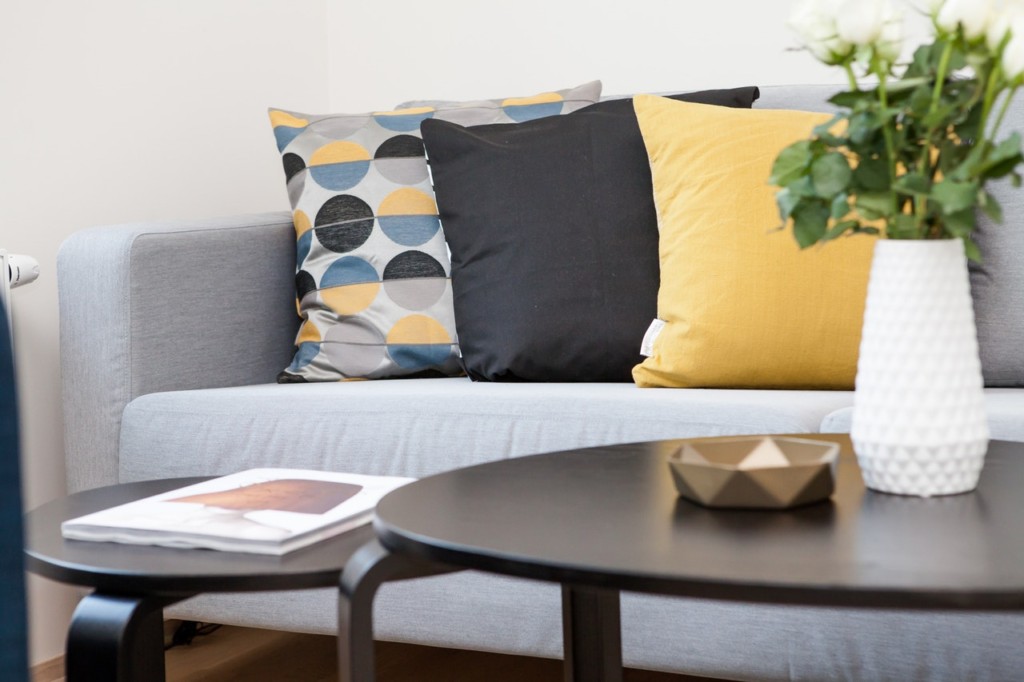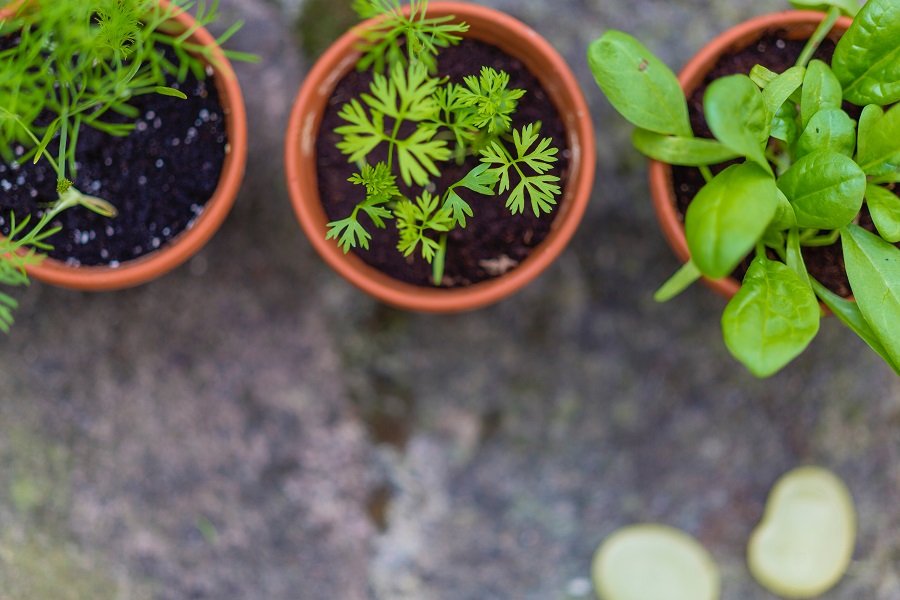Becoming more environmentally-friendly and saving money go hand in hand, but they can often be considered difficult changes to make. We’re here to share with you some of the easiest ways to go green around your home and make a positive difference to the world we live in.

1. Switch light bulbs to CFL or LED bulbs
This change may not seem very impactful, especially if you do it gradually whenever a bulb goes in your house. But, changing to CFL (compact fluorescent lights) or LED bulbs can help you easily lower your energy costs through a more efficient use of power, helping the environment and ensuring your house is still brightly lit.
2. Use a compost bin
If you’re a keen gardener, or looking to grow some small plants or a herb garden (see point 5), starting a compost bin can really help you cut down on food waste being sent to landfill, and give your plants a rich, nutritious fertiliser.
Keep a small bin in your kitchen so that when you’re cooking, you’re able to easily add any food scraps – like onion skins, potato and carrot peelings. Once the bin is full, transfer them to a compost bin out in the garden and wait for them to decompose.
3. Use, or make your own, reusable bags
Plastic bags are especially harmful for the environment because they take a very long time to decompose. Instead of using a new plastic bag whenever you go shopping, take the greener option and avoid the 5p per bag charge by taking reusable bags with you to carry the load. Many supermarkets offer bags for life, or if you’re feeling creative, why not make your own.
4. Use lights sparingly and turn them off when you leave the room
Turning off lights when leaving a room seems like an easy habit to get into, but it can be surprisingly difficult to remember. One way to cut down on your electricity usage is to turn them on only when absolutely necessary; up until that point, take advantage of natural light by making sure curtains are open and letting in the light.
5. Plant a herb garden
Planting a herb garden is one of our more proactive suggestions, and may feel like a project that takes a lot of time, but growing your own herbs can drastically cut down on the amount of plastic and paper you buy when purchasing bunches of herbs from the supermarket. This also means that you get fresh herbs to use in your cooking, without any of the added substances that might have been used to grow shop-bought herbs.

6. Reduce the amount of plastic food packaging you buy
It’s amazing how much plastic packaging comes with our food that is then thrown away. Avoid sending more plastic to landfill by reducing the amount of food you buy that comes in packaging – buy your own reusable produce bags for when you go shopping and shop at farmers markets to cut down.
7. Unplug plugs and turn off plug sockets that aren’t being used
Turning off plug sockets, and unplugging appliances, when you’re not using them can save a lot more energy than you think. Although the appliances aren’t on, they still receive electricity through the cables that you end up paying for in your electricity bill.
8. Insulate your loft (store contents during the process)
Insulating your loft can provide a valuable shield against losing heat through the roof of your house. Heat rises so, as you heat your home, an uninsulated loft means you’re losing valuable warmth. While it may be one of our pricier suggestions, it is suggested that homeowners will recoup the cost of insulation within three years of having it done.
9. Add thick curtains to windows and doors
Thick curtains may not be the most beautiful of interior decorations to hang in your home but, having heavy material between your windows and your rooms during the night, especially in winter, can cut down on the loss of heat through draughty frames and single glazing. If you’re not ready to double glaze your windows, consider thick curtains instead.
10. Lower your thermostat and the temperature of your hot water
This may not be an easy decision to make if you like being warm but even lowering your thermostat and hot water temperature by one degree could save you a lot of money. If you find yourself scalding your hand when running the tap or sweltering in your house in the middle of winter, this may be a change that could really benefit you.
11. Fit a water-saving shower head
If you find yourself using a lot of water, even though you’re showering instead of opting for a bath, it may be due to the amount of water that your shower head pumps into your shower, especially if you’re taking long ones. An aerated or low flow shower head could be the answer to your water consumption woes.
12. Install underfloor heating
Underfloor heating can be a fantastic choice for homeowners who want to maximise space efficiency and heat absorption in their homes. It uses a lot less energy and also heats up a larger space much more efficiently than traditional radiators can.
If you’re thinking of installing underfloor heating throughout your home, try fitting a room at a time – storing the contents of the room in self-storage – to see how much of a difference it makes and whether you need to adapt more rooms. Bathrooms are often a good place to start.
